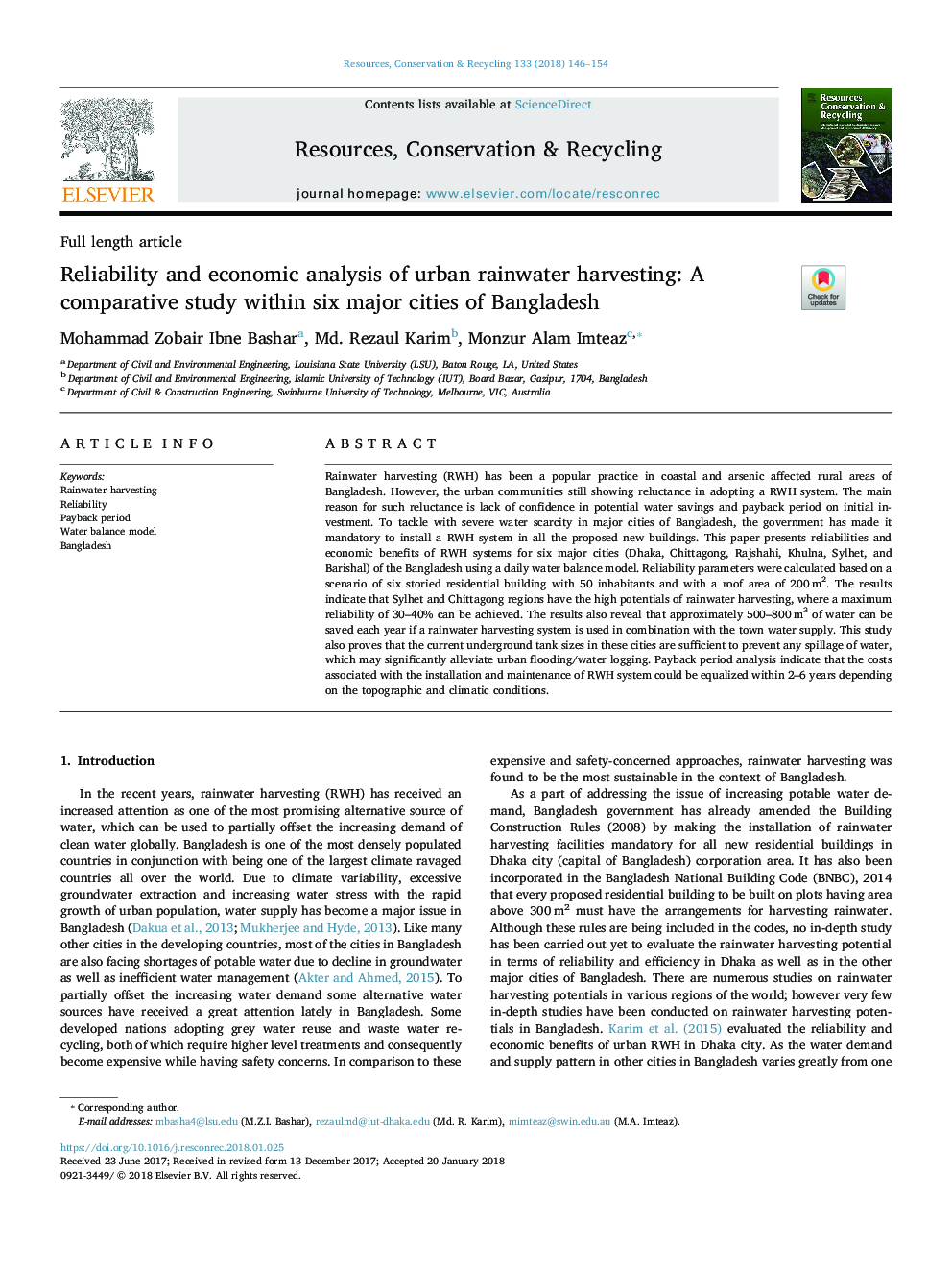| Article ID | Journal | Published Year | Pages | File Type |
|---|---|---|---|---|
| 7494248 | Resources, Conservation and Recycling | 2018 | 9 Pages |
Abstract
Rainwater harvesting (RWH) has been a popular practice in coastal and arsenic affected rural areas of Bangladesh. However, the urban communities still showing reluctance in adopting a RWH system. The main reason for such reluctance is lack of confidence in potential water savings and payback period on initial investment. To tackle with severe water scarcity in major cities of Bangladesh, the government has made it mandatory to install a RWH system in all the proposed new buildings. This paper presents reliabilities and economic benefits of RWH systems for six major cities (Dhaka, Chittagong, Rajshahi, Khulna, Sylhet, and Barishal) of the Bangladesh using a daily water balance model. Reliability parameters were calculated based on a scenario of six storied residential building with 50 inhabitants and with a roof area of 200â¯m2. The results indicate that Sylhet and Chittagong regions have the high potentials of rainwater harvesting, where a maximum reliability of 30-40% can be achieved. The results also reveal that approximately 500-800â¯m3 of water can be saved each year if a rainwater harvesting system is used in combination with the town water supply. This study also proves that the current underground tank sizes in these cities are sufficient to prevent any spillage of water, which may significantly alleviate urban flooding/water logging. Payback period analysis indicate that the costs associated with the installation and maintenance of RWH system could be equalized within 2-6 years depending on the topographic and climatic conditions.
Related Topics
Physical Sciences and Engineering
Energy
Renewable Energy, Sustainability and the Environment
Authors
Mohammad Zobair Ibne Bashar, Md. Rezaul Karim, Monzur Alam Imteaz,
